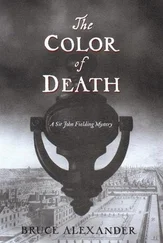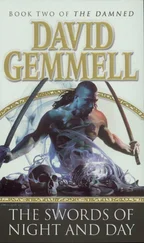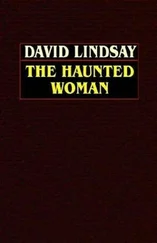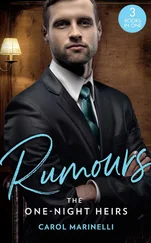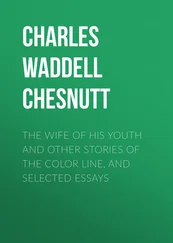David Lindsey - The Color of Night
Здесь есть возможность читать онлайн «David Lindsey - The Color of Night» весь текст электронной книги совершенно бесплатно (целиком полную версию без сокращений). В некоторых случаях можно слушать аудио, скачать через торрент в формате fb2 и присутствует краткое содержание. Жанр: Полицейский детектив, на английском языке. Описание произведения, (предисловие) а так же отзывы посетителей доступны на портале библиотеки ЛибКат.
- Название:The Color of Night
- Автор:
- Жанр:
- Год:неизвестен
- ISBN:нет данных
- Рейтинг книги:4 / 5. Голосов: 1
-
Избранное:Добавить в избранное
- Отзывы:
-
Ваша оценка:
- 80
- 1
- 2
- 3
- 4
- 5
The Color of Night: краткое содержание, описание и аннотация
Предлагаем к чтению аннотацию, описание, краткое содержание или предисловие (зависит от того, что написал сам автор книги «The Color of Night»). Если вы не нашли необходимую информацию о книге — напишите в комментариях, мы постараемся отыскать её.
The Color of Night — читать онлайн бесплатно полную книгу (весь текст) целиком
Ниже представлен текст книги, разбитый по страницам. Система сохранения места последней прочитанной страницы, позволяет с удобством читать онлайн бесплатно книгу «The Color of Night», без необходимости каждый раз заново искать на чём Вы остановились. Поставьте закладку, и сможете в любой момент перейти на страницу, на которой закончили чтение.
Интервал:
Закладка:
David Lindsey
The Color of Night
“We are, I know not how, double within ourselves, with the result that we do not believe what we believe, and we cannot rid ourselves of what we condemn.”
Michel de Montaigne, Essays (II, 16, 469 C)CHAPTER 1
VENICE, SESTIERE DI DORSODURO
It was the middle of the afternoon, and the windows of the old palazzo were partially opened to the crisp spring air. The study, filled with books and artwork obsessively arranged and cataloged and situated, overlooked the narrow canal, and the light that the room received was reflected off the buildings opposite, their weathered colors throwing off pale hues of apricot and lilac, wan ocher and coral and vanilla.
The sounds of the canal rose up on the summer heat and drifted into the room as well, carrying the voices of tourists strolling on the small fondamenta, the slosh of a passing gondola, the voices of merchants unloading produce from a small barge, water lapping under the bridge just beyond the window, a woman’s laughter.
“Just put them here,” the German said to the dealer, spreading his arms out over the long refectory table at which he sat and that he used as a working desk. He had moved aside orderly piles of paperwork and books to provide a clean surface.
The dealer nodded deferentially and approached the table with an oversize leather portfolio. His name was Claude Corsier, and he was a private art dealer from Geneva. He specialized in the drawings of artists of the nineteenth and twentieth centuries, the secondary market. That is, deceased artists. His unusual ceremonious manner was not a demonstration of particular respect for the German client. Corsier was known for his courtesy to everyone, billionaire and housemaid alike. It was said that his manner was a reflection of his lifelong respect for the artwork in which he traded.
Corsier put his portfolio on a small, marble-topped side table a step or two from his client and opened it. He was a large man, with big hands that one normally associated with farmworkers and laborers. But Corsier’s hands were pale and soft, his nails manicured; they had never been darkened by the sun or stained by soil or lifted anything heavier than a folio reference book. His burly physique was genetic, not occupational. He had been bookish since childhood.
Each drawing was enclosed in its own acid-free paper folder to protect it. After opening the first folder, Corsier turned it around and placed it on the table before the German.
“First, the Italians you wanted to see. Giovanni Boldini. Becoming very difficult to find these days. Six images here, and a small, quick sketch of a hand on the back of the sheet. These are studies for portraits, it seems, but the finished work, if it was ever completed, has never been identified.” Leaning over the refectory table, he gently pointed to an image with the barrel end of a marbled fountain pen. The pen was less intrusive than using one’s finger. “The turned head is quite good here,” he said.
The German, whose name was Wolfram Schrade, nodded, bending over the sketch to look at it closely. He picked up a horn-handled magnifying glass from the table and examined each image on the sheet of paper. There were six.
“These are very nice,” Schrade said. His accent was heavy, but attractive, sophisticated.
“I like them,” Corsier agreed modestly.
The German picked up the paper and looked at the drawing on the back. Corsier watched him as he turned and held it up to the diffused light from the windows. He was a handsome man, tall and lean, in his early fifties. His hair was thick and coarse, and Corsier had always marveled that it very nearly was the exact color of old vellum. His features were fine, a straight, narrow nose, a rather wide mouth with a full lower lip. The irises of his eyes were odd, almost lacking in any pigmentation at all.
Without commenting further, Schrade closed the folder, set it aside, and looked at Corsier, who was already turning to get a second one.
“Ettore Tito,” Corsier said, placing the next opened folder before his client. “Studies for La Perla, now in a private collection. Very fine nudes… The treatment here”-again the fountain pen pointed out a delicate line-“is exquisite, the way he handled the shadow at this concavity on the shoulder.”
Schrade closed the folder and set it aside with the other one.
“And this artist is most difficult to find…” Corsier was unfolding a third folder.
The presentation took up the better part of an hour, and by the time Corsier had shown his client nine works, the most he had ever shown him at one sitting, the light coming into the room from the canal had become richer with the lower angle of the sun. The circular rulli piombati panes in the Renaissance windows were now concentric smears of pastel.
The drawings were stacked at Schrade’s left elbow, and Corsier stood in front of the refectory table and folded his soft hands, looking down at the seated client.
“I will have all of them,” Schrade said.
Corsier made a slight “as you wish” gesture with his hands. He had sold this man a fortune over the past dozen years, and this lot alone was a small fortune in itself.
“A drink to celebrate?” the German asked.
Corsier tilted his head forward, a bow of assent. Schrade got up from behind his desk and stepped across the marble floor to a sixteenth-century cabinet of dark walnut and opened the doors to reveal bottles of liquor. Two bottles were already opened, and he poured Corsier a glass of Prosecco, the dealer’s favored drink with which to close a sale, and a glass of Bordolino for himself.
“Please, sit for a while,” he said, giving the aperitivo to Corsier and gesturing to a pair of heavy, X-frame wooden armchairs nearer the windows. When they were seated, the German raised his glass and said, “To resolution.”
Corsier was already drinking the Prosecco when he realized the toast didn’t make any sense to him. He was still swallowing, relishing the movement of the drink on his palate, when Schrade continued.
“I assume you’ve observed your usual discretion about bringing these to me,” he said.
“Of course.”
“There is no record that you’ve come here?”
“None.”
“You’ve always been reliable on that score,” Schrade conceded.
“All of my clients require discretion.” Corsier took another large drink of the Prosecco.
The next few minutes were spent in casual conversation about drawings. The German was a voracious collector, and Corsier knew that he had large personal collections in his homes in Paris and Berlin. More than likely the drawings Corsier had just sold him would go to one of these two locations, where his client had elaborate archival spaces for exhibiting his collections.
“As for the matter of payment,” Schrade said offhandedly, “I’m sure you won’t mind if I settle with you later.”
Corsier’s last sip of Prosecco stuck in his throat and refused to go down. He struggled with it as his thoughts suddenly swarmed, turning, tacking, veering first in one direction, then in another, as he tried to concentrate on the most important implications of what his client had just said.
First of all, this was now the second time. Wolfram Schrade already owed Corsier for a group of symbolists’ drawings that Corsier had brought him four months before, perhaps the best group of symbolists that Corsier had ever had in his possession and which he had collected over a period of nearly a year, specifically with this client in mind. There had been an even dozen drawings of extraordinary quality. It had come to 1.3 million Deutsche marks. Corsier had taken them to the German’s Berlin home. Where he had left them. With only a promise of payment.
Читать дальшеИнтервал:
Закладка:
Похожие книги на «The Color of Night»
Представляем Вашему вниманию похожие книги на «The Color of Night» списком для выбора. Мы отобрали схожую по названию и смыслу литературу в надежде предоставить читателям больше вариантов отыскать новые, интересные, ещё непрочитанные произведения.
Обсуждение, отзывы о книге «The Color of Night» и просто собственные мнения читателей. Оставьте ваши комментарии, напишите, что Вы думаете о произведении, его смысле или главных героях. Укажите что конкретно понравилось, а что нет, и почему Вы так считаете.

